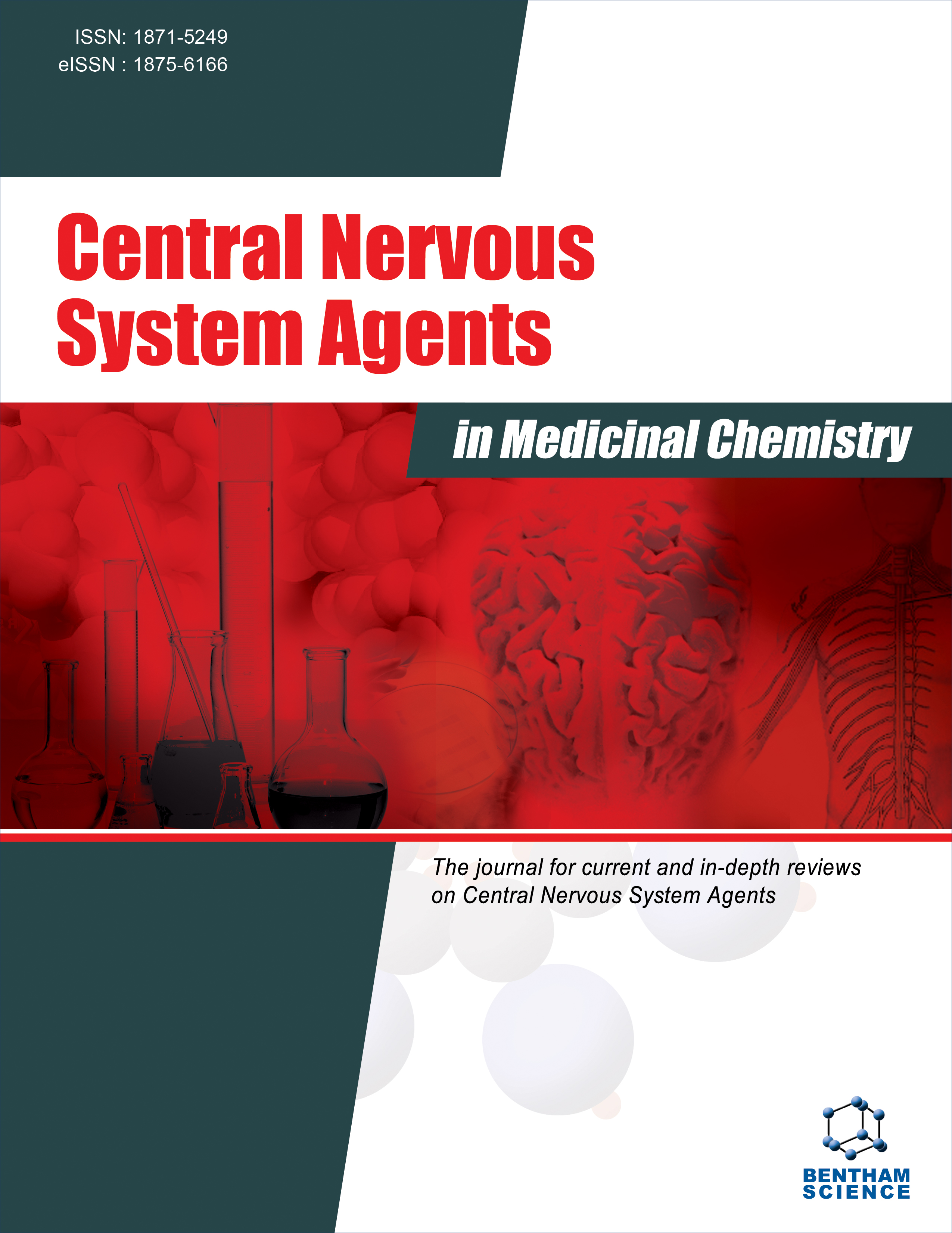- Home
- A-Z Publications
- Central Nervous System Agents in Medicinal Chemistry (Formerly Current Medicinal Chemistry - Central Nervous System Agents)
- Previous Issues
- Volume 11, Issue 3, 2011
Central Nervous System Agents in Medicinal Chemistry (Formerly Current Medicinal Chemistry - Central Nervous System Agents) - Volume 11, Issue 3, 2011
Volume 11, Issue 3, 2011
-
-
Duloxetine in the Treatment of Depression: An Overview
More LessAuthors: Francesco Monteleone, Mariella Caputo, Mario Felice Tecce and Anna CapassoDepression is a disorder that can be classified in the categories of non-organic psychiatric disorders and mood disorders. Mood tone is an important psychic function involved in the adaptation to both our internal and external world. It is flexible, that is, it goes up when we are in positive and favorable conditions, but it goes down when we are in negative and unpleasant states. We can define depression as a condition when m Read More
-
-
-
The Influence of Hypothalamic Cytokine PRP on Protein Synthesis in Brain Subcellular Compartments in Crush Syndrome
More LessCrush-syndrom (CS) was characterized by Bywaters E.G.L. in 1941 after London blitz. The soft tissues is followed by acute hemodynamic shock, myoglobinuria, acute renal insufficiency, and lethal endotoxicity. Data of CS pathogenesis study has shown that the largest changes in Crush occur during decompression and are accompanied by acute alteration of brain protein synthesis and strong morphological changes of brain st Read More
-
-
-
The Emerging Role of the Endocannabinoid System in the Sleep-Wake Cycle Modulation
More LessThe endocannabinoid system comprises amides, esters and ethers of long chain polyunsaturated fatty acids. Narachidonoylethanolamide (anandamide; ANA) and 2-arachidonoylglycerol (2-AG) are endogenous cannabinoids (endocannabinoids) ligands for the cannabinoid family of G-protein-coupled receptors named CB1 and CB2. Endocannabinoids are released upon demand from lipid precursors in a receptor-depen Read More
-
-
-
The Role of P-Glycoprotein in Psychiatric Disorders: A Reliable Guard of the Brain?
More LessA major component in the protection of the brain against blood-borne toxic influences is the multispecific efflux pump P-glycoprotein. This pump, a 170 kD protein, located at the luminal side of the capillary endothelial cells, has a large capacity and is capable of extruding a wide array of structurally divergent substrates. The brain uptake of the majority of antidepressants and antipsychotics, as well as many other psychotr Read More
-
-
-
Gastric Inhibitory Polypeptide and its Receptor are Expressed in the Central Nervous System and Support Neuronal Survival
More LessThe development of neuronal apoptosis depends on an intrinsic transcriptional program. By DNA microarray technology, we have previously implicated a number of genes in different paradigms of neuronal apoptosis. In the present study, we investigated the spatiotemporal pattern of expression of two of these genes, gastric inhibitory polypeptide (Gip) and its receptor (Gipr) in the rat central nervous system. The levels Read More
-
-
-
Clinical and Electroencephalographic Assessment of Cefepime During Treatment of Nosocomial Infections in Neurological Patients
More LessObjective: Cefepime neurotoxicity usually occurs in patients with renal impairment. The aim of this study was to evaluate the neurotoxicity of cefepime administered by continuous intravenous infusion during treatment of nosocomial infections in neurological patients with normal renal function. Methods: This was an open pilot study of neurological patients with infections caused by cefepime sensitive bacteria. Patients h Read More
-
-
-
An Activity Model for Novel Antidepressants that Interact with the Serotonin Transporter (SERT)
More LessDysfunction of serotoninergic neurotransmission is known to be involved in the pathophysiology of major depression. The molecules that enhance the level of serotonin either via blocking serotonin reuptake or through inhibition of its metabolism are effective antidepressants. With this as the basis, a group of new molecules that supposedly effect serotoninergic neurotransmission were designed and tested. The new molecular Read More
-
Volumes & issues
-
Volume 25 (2025)
-
Volume 24 (2024)
-
Volume 23 (2023)
-
Volume 22 (2022)
-
Volume 21 (2021)
-
Volume 20 (2020)
-
Volume 19 (2019)
-
Volume 18 (2018)
-
Volume 17 (2017)
-
Volume 16 (2016)
-
Volume 15 (2015)
-
Volume 14 (2014)
-
Volume 13 (2013)
-
Volume 12 (2012)
-
Volume 11 (2011)
-
Volume 10 (2010)
-
Volume 9 (2009)
-
Volume 8 (2008)
-
Volume 7 (2007)
-
Volume 6 (2006)
Most Read This Month
Article
content/journals/cnsamc
Journal
10
5
false
en


